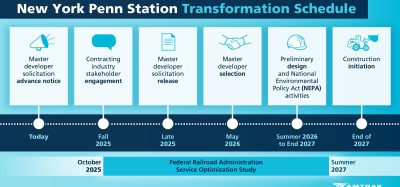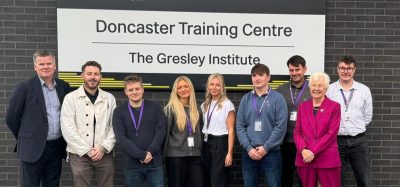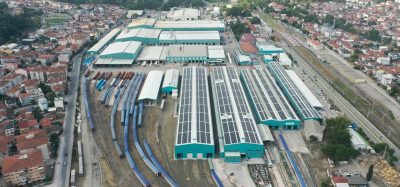Global Safety Evidence Centre launched to tackle rail industry safety challenges
Posted: 22 July 2025 | Elizabeth Jordan - Global Railway Review | No comments yet
We spoke to Nancy Hey, Director of Evidence and Insight at Lloyd’s Register Foundation, about the latest investment into safety in critical infrastructure sectors, including the rail industry, and what it could mean for the future.
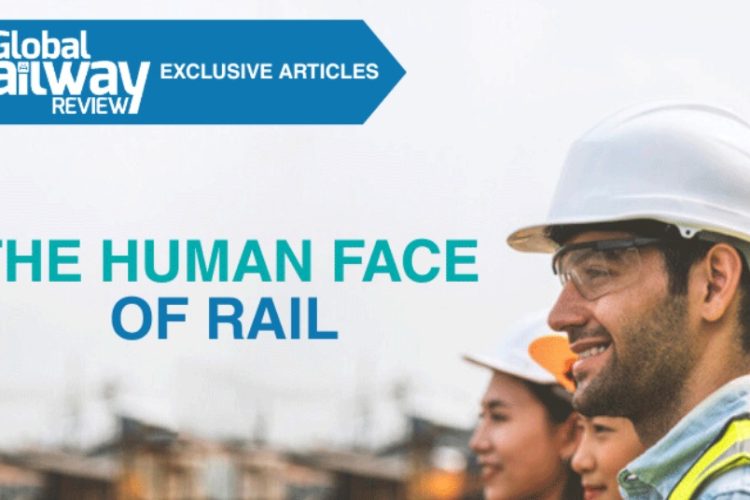

The Global Safety Evidence Centre is backed by a significant £15 million investment. What do you envision as the single most transformative outcome this centre will achieve in addressing global safety challenges within the first five years?
The investment is £15 million over 10 years. The centre hopes to make a significant difference in two main areas within the first five years:
Getting things that are already known into practice where they are not currently being applied. A good example of this is occupational safety and health training, where there are identifiable gaps.
Identifying new things that occupational safety and health practitioners can implement in the workplace and bringing these to a confidence level where they can be effectively put into practice.
Join our free webinar: Rail cyber-security in a time of technological and regulatory transformation
Join our expert panel, including speakers from Nokia and Siemens Mobility, to explore the critical convergence of cybersecurity and 5G rail comms.
Date: 3 Dec | Time: 15:00 GMT
Can’t attend live? No worries – register to receive the recording post-event.
The approach involves understanding what practitioners or experts already do and believe makes a difference, checking if it’s been researched and is safe and effective and then helping to implement those practices in as many places as possible. I have a strong hope to see real changes to safety outcomes within the first five years, along with a broader range of reliable options for improving workplace safety outcomes.
The centre also aims for a better understanding of safety tools, methods, and research approaches that are effective across various industries, considering both employee safety and system/process safety. There’s an aspiration to transfer effective practices or new techniques for emerging risks from one industry to another.
The goal is to deliver information to experts in other fields when they need it and in an understandable format. An example is sharing solutions for hotter working conditions from regions that have more experience with them.
The initial reports RAND Europe have produced for this new Centre highlight a dual challenge – scarcity of high-quality evidence, and issues with its accessibility. How will the Centre balance creating new evidence with effectively collecting and communicating existing knowledge in an understandable and actionable form for more diverse audiences?
Creating new evidence, collecting existing knowledge, and communicating it effectively are all equally important. The Centre will bring together global knowledge regarding problems, solutions, and the confidence levels in those solutions.
Communication is also super important. While it’s my job to read research papers, it’s not most peoples’, and even I sometimes struggle with some terminology. The goal is to deliver information to experts in other fields when they need it and in an understandable format. An example is sharing solutions for hotter working conditions from regions that have more experience with them.
The Centre will also seek to understand what new knowledge needs to be acquired. This includes extracting expert knowledge (often tacit knowledge) from practitioners who know ‘this works, we’ve been doing it a long time, that’s why we do it’ even if it hasn’t been formally researched. This unresearched expertise presents an obvious research gap.
Regarding the quality of evidence, I believe there’s a reasonable amount of evidence available for workplace contexts, drawing on my 15 years of experience. While applied research in the workplace has challenges, techniques can be introduced and built upon (e.g., learning in a commercial context) to accelerate progress.
Recently, I had a conversation with the International Organisation for Standardisation (ISO) committee on occupational safety and health (OSH) management, highlighting the excitement about making health and safety terms more consistent and understandable for people from diverse backgrounds, expertise, and languages. There are some quick wins possible on the communication front.
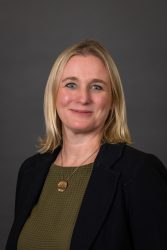

Nancy Hey
With £2 million being made available to support new research, how will the centre prioritize which specific OSH evidence gaps to address to ensure that findings are most relevant and impactful for practitioners in various global and industrial contexts?
The Centre is looking at different types of research:
- Evidence collection on known gaps, or evidence collation to identify what’s known and new evidence creation in priority gaps: Projects must address a global safety problem (potentially identified using the World Risk Poll or other indicators of global relevance) and represent the next step to fill an evidence gap. This could mean consolidating existing knowledge or providing solutions practitioners need.
- Stakeholder research: This involves understanding what experts in the field already know and mapping that knowledge against the existing research evidence base to identify gaps that require further research. This also includes helping to develop collaborative research agendas.
The Centre is interested in proposals related to both safe work and safety science. Safety science helps to bridge tools and methods across different industries and sectors, determining what can be universally applied or not.
You emphasize the need to harness safety practitioners’ knowledge. How will the Centre actively engage practitioners ensuring their expertise contributes to both identifying evidence gaps and informing the evidence base itself?
OSH practitioners, as well as many other professionals, are well-positioned to improve safety outcomes, and providing them with necessary knowledge is really valuable.
The Centre’s research has shown that much safety practice involves tacit knowledge (expertise). A key approach will be to understand this tacit knowledge and verify if it has been formally researched. Many practices are done because they are believed to be effective, even if they haven’t been researched in the same way due to differing incentives. The Centre is actively seeking projects in this area – understanding what is already done because it’s considered good practice.
Additionally, the Centre will engage practitioners in two other ways: working with standards practitioners, aiming to understand their needs in setting health and safety standards, ensuring that standards used across various industries are as good as possible; and involving them in quality assurance and technical advisory groups. Each project will have an advisory panel, led by a practitioner and a former standard setter, who will also be part of every consultation group. Each project will also have a consultation group with practitioner involvement to help make the work as relevant and useful as possible.
So, beyond the initial output of collected and new evidence, how will the Centre measure its real-world impact on improving safety practices and reducing harm globally?
The Centre has numerous measures and indicators to assess its impact. The ultimate goals are to improve safety outcomes, have more people adopting effective and cost-effective practices, and provide as many solutions as possible to existing problems.
The types of measures used and questions we will be asking ourselves are:
Reach: Have the target audiences been reached?
Understanding: Do people comprehend the information provided?
Impact into practice: Has the information influenced actual practices? Are people changing their ways of working (e.g. adopting a specific method)?
New solutions: Is there now a reliable solution where none existed before?
If an area currently has little evidence, the Centre hopes that in five years, there will be many potential solutions emerging. The Centre also utilizes the World Risk Poll to monitor locations people are concerned about or where they are experiencing harm, particularly at work. While the Centre cannot directly control these outcomes, the hope is that its work will ultimately have an impact on reducing harm.
The Centre is seeking safe work projects within any critical infrastructure industry. We are also looking for safety science projects that have broad applicability across different industries. This includes projects that explore tools and methods used across various sectors and whether they can be transferred. The general aim is for projects to be useful to as many people as possible.
We have two upcoming reports:
- A report on safe work and climate change, which reviews all available evidence in that area, is due to be released on 16 July.
- Another report will focus on emerging technologies, evidence-based practices, and safe work, which is also highly relevant to the rail sector.
Find out more about these reports here: lrfoundation.org.uk/evidence-library.
Global Railway Review Autumn/ Winter Issue 2025
Welcome to 2025’s Autumn/ Winter issue of Global Railway Review!
The dynamism of our sector has never been more apparent, driven by technological leaps, evolving societal demands, and an urgent global imperative for sustainable solutions.
>>> Read the issue in full now! <<<
Related topics
Funding & Finance, Safety, The Human Face of Rail, The Workforce, Training & Development



